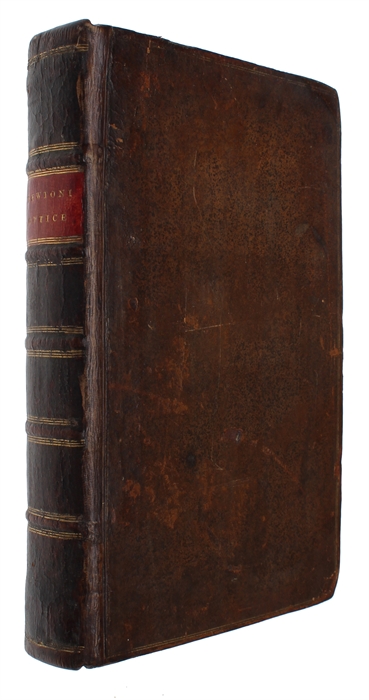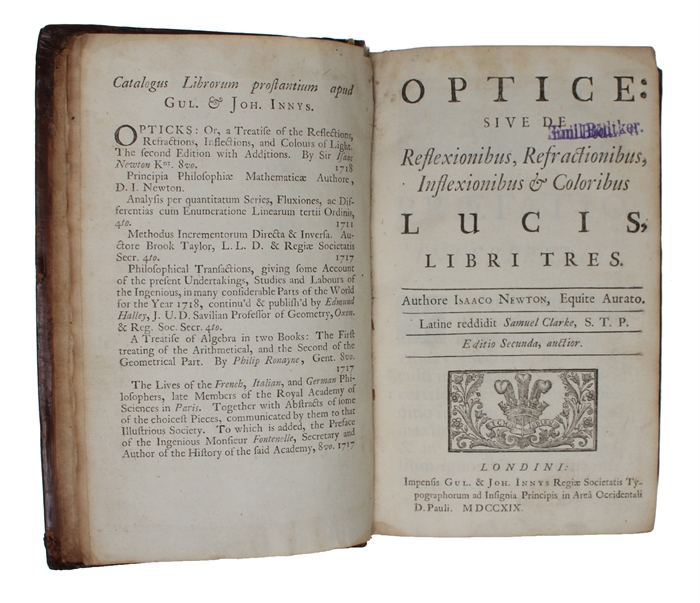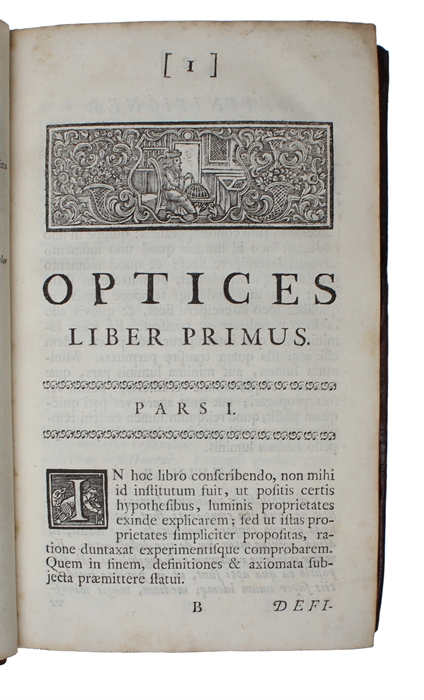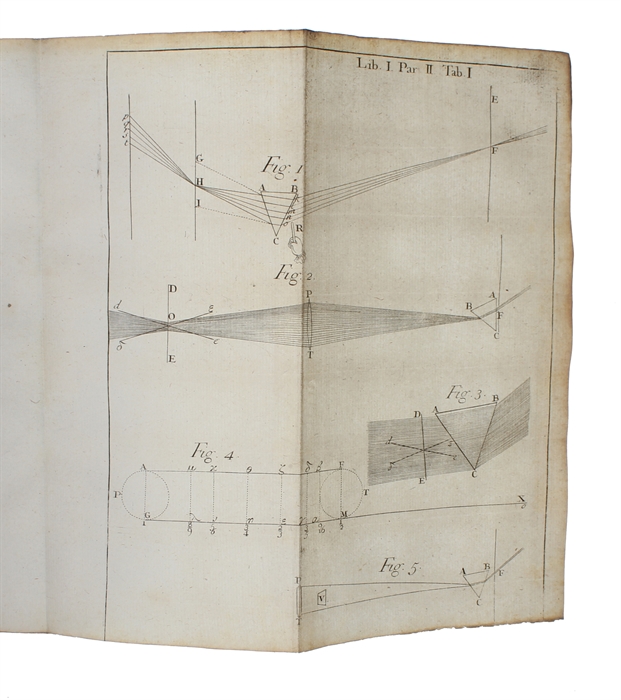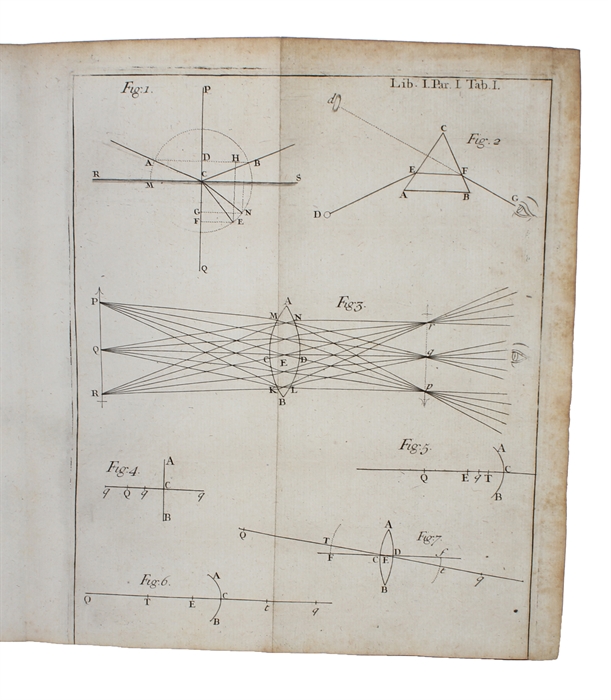NEWTON, ISAAC.
Optice: sive de Reflexionibus, Refractionibus, Inflexionibus & Coloribus Lucis, Libri tres. Latine reddidit Samuel Clarke, S.T.P. Editio Secunda, auctior.
London, Impensis Gul. & Joh. Innys, 1719 (colophon: Londini: Ex Officina Gulielmi Bowyer, 1718).
8vo. Contemp. full calf. Corners, fronthinge and spineends professionally repaired. Inner hinges reinforced. Gilt lineborders on back. Titlelabel in red leather with gilt lettering. Old owners name stamped on titlepage (small).Instead of htitle is bound "Catalogus Librorum prostantium apud Gul. & Joh. Innys" (1 leaf), the Cataloque is furthermore bound at end, but with a different typography. (2),XI,(1),415 pp. and 12 folded engraved plates. Very light brownning to a few margins. Printed on good paper, in general fine and clean internally.
Scarce second Latin edition of Newton's "Optics: or a Treatise of the Reflections, Refractions, Inflections, and Colours of Light. London 1704.", one of the great books in the history of science. "Newton's Optics did for Light what his Principia had done for Gravitation, namely, placed it on a scientific basis." (E.W. Brown). The translation was brought to light "At the request of Newton, Dr. Samuel Clarke prepared a Latin edition of his Optics which appeared 1706, and he was generously presented by Sir Isaac with GBP 500, or GBP 100 for each of his five children, as a token of the appreciation and gratitude of the author. DeMoivre is said to have secured and taken charge of this translation, and to have spared neither time nor trouble in the task. Newton met him every evening at a coffe-house, and when they have finished their work he took De Moivre home with him to spend the evening in philosophical conversation."(Brewster in his "Newton", 1855").
"In the accumulation of optical phenomena from his first paper (the short memoir in Philosophical Transaction, 1672) until the above book (the Optics,..) 33 years later, Newton had gathered explanations to many problems. The rainbow is fully explained and also "Newton's rings", produced by pressing the flat side of a plano-convex glass against a double convex lens of long focal lenght, producing rings of alternating brightness and darkness; his explanation was not valid, as he did not know optical interference. He speculated on the double refraction of Icelandic spar...." (Dibner in Heralds of Science No 148) - G.J. Gray No 180.
Order-nr.: 38274

